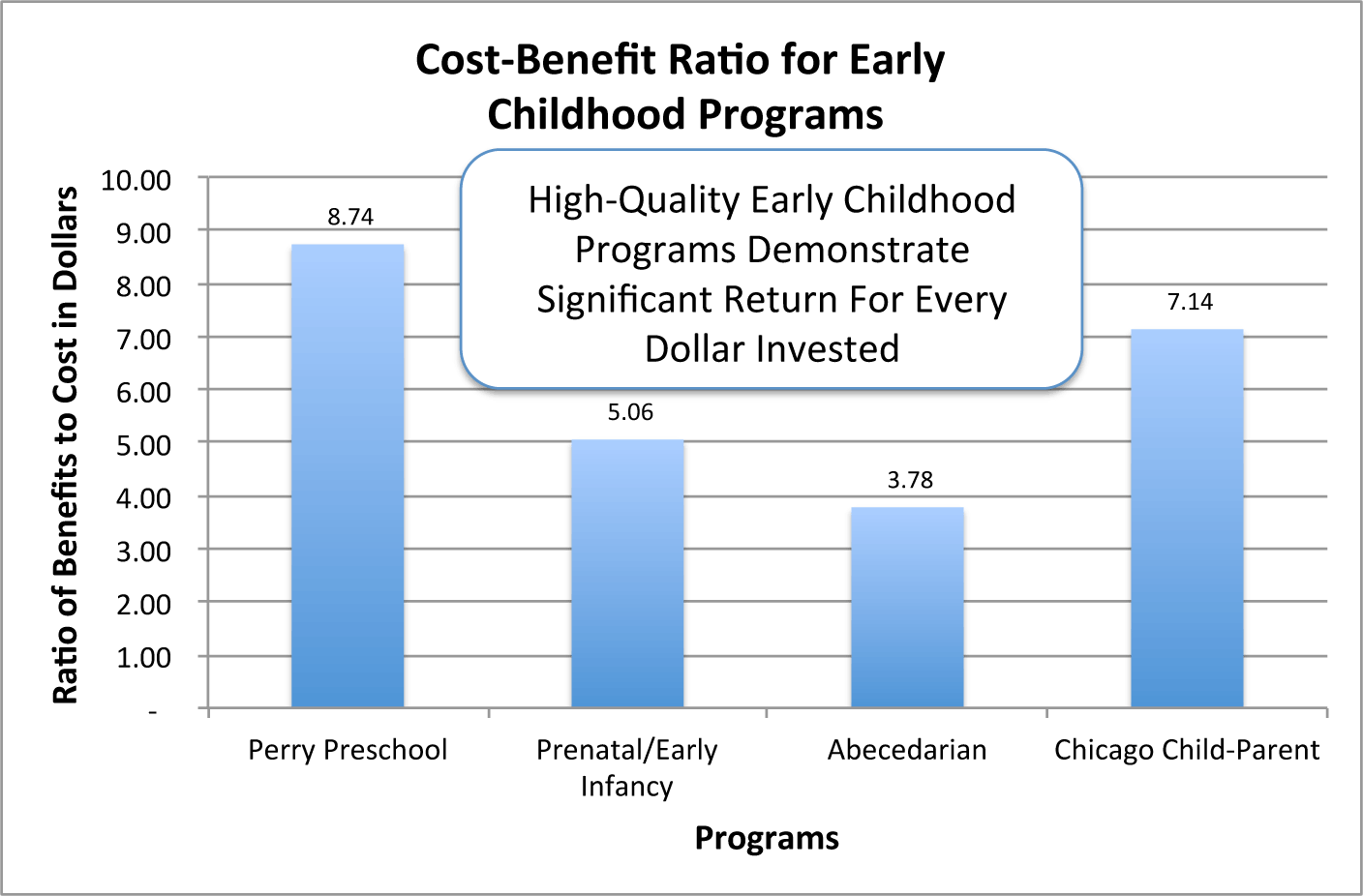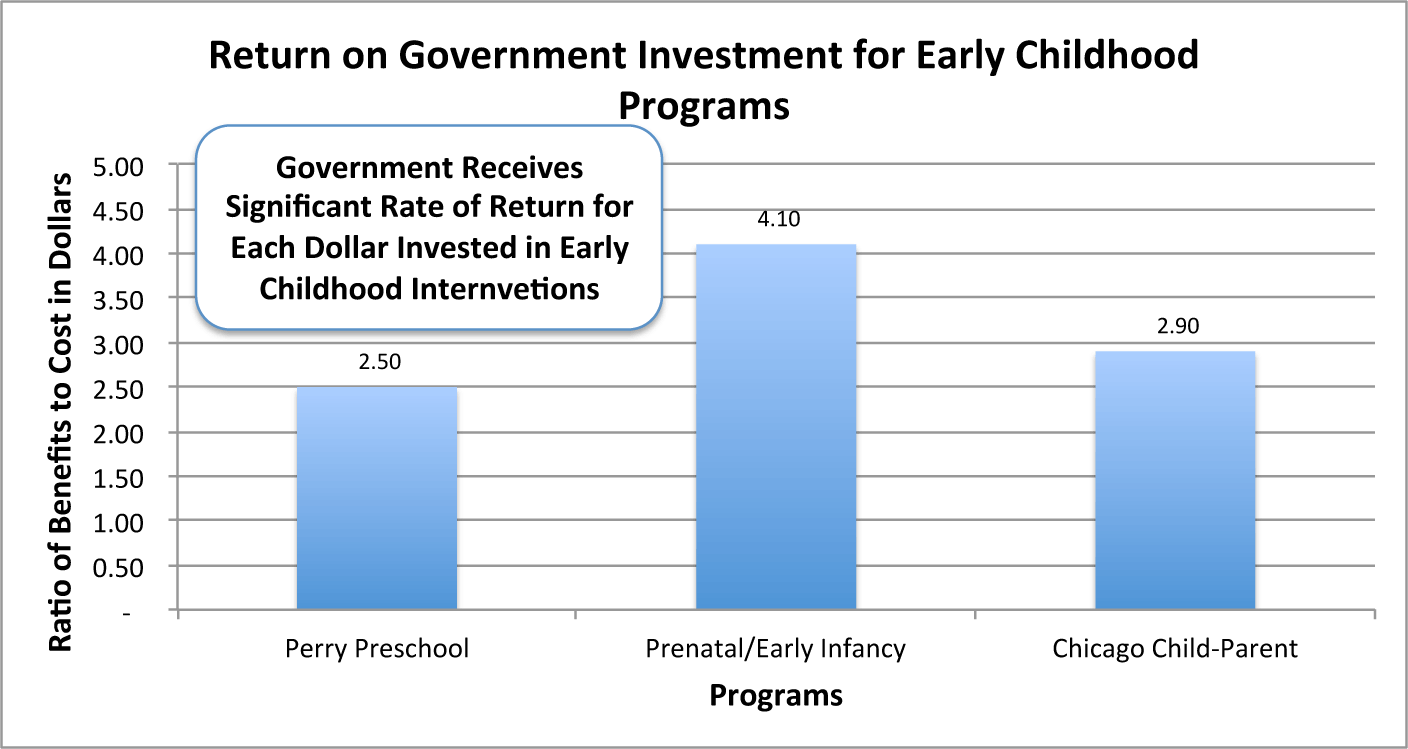Are Early Childhood Programs Worth the Investment?
Why is this question important? Beginning with Head Start in the 1960s, strong evidence has existed for a substantial return on investment in early childhood development (ECD) programs. In the United States approximately 20% of children under the age of six live below the poverty level. Studies consistently demonstrate benefit-cost ratios for returns over the initial investments made to quality ECD programs. The track record of ECD programs demonstrates they are effective for closing the education gap that exists for children born into poverty.
See further discussion below.


Source(s): Exceptional Returns: Economic, Fiscal, and Social Benefits of Investment in Early Childhood Development, Economic Policy Institute, 2004.
Result(s): The cost-benefit ratios varied, but all four programs had a significant impact. Initial studies of the impact of ECD programs produced positive results based on improvements in IQ scores. Unfortunately, these benefits faded as the children advanced through school. This initial exclusive attention on IQ scores proved to be the wrong outcome measure. Subsequent research focused on more socially relevant outcomes such as academic achievement, higher graduation rates, higher employment rates, higher earnings, better health, reduced welfare dependency, and lower crime. The effects ranged from a minimum of $3.78 returned for every $1.00 expended up to a maximum return of $8.74.
While participants and their families received a major portion of the benefits, it is also true that the benefits to the community were large, and those alone could outweigh the original investment. A Federal Reserve Bank of Minneapolis study of the Perry Preschool program determined a rate of return for the public and the government at 12% as compared with a return for the participants of 4%. This represents a total return in excess of 16%. The study calculated a rate of return for the government at a minimum of 2.5 to 1 for the Perry Preschool and a maximum of 4.1 to 1 for the Prenatal/Early Infancy program. These calculations were based on the assumption that the government contributed all costs and that all savings generated accrued to the government.
Implication(s): The implementation of high-quality ECD programs would require a significant investment on the part of the United States, but the payoff would be substantial. The study projects that an investment of $19 billion annually to provide children ages three and four with high-quality ECD would result in lower remedial, special education, criminal justice, and welfare costs. It would also increase the incomes of participants and the taxes paid to local, state, and federal governments. The return over 30 years would be double the original investment. Possible implications are a significant positive impact on the GDP, reduction in poverty, reduction in crime, and enhancement of the solvency of Social Security.
Author(s): Robert G. Lynch
Publisher(s): Economic Policy Institute
Study Description: This study reviewed four research studies on the long-lasting effects of early childhood development programs. The studies included the Perry Preschool Project, Ypsilanti, Michigan; the Prenatal/Early Infancy Project, Elmira, New York; the Abecedarian Early Childhood Intervention, North Carolina; and the Chicago Child-Parent Center Program, Chicago, Illinois. The four studies followed the long-term effects of early childhood programs on the participants and control groups. Barnett (1993) Karoly et al. (1998), Masse and Barnett (2002), Reynolds et al. (2002).
Citation: Lynch, R. G. (2004). Exceptional Returns: Economic, Fiscal, and Social Benefits of Investment in Early Childhood Development. Washington, DC: Economic Policy Institute.
